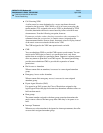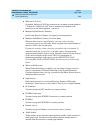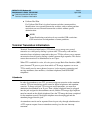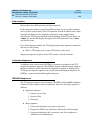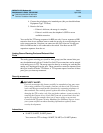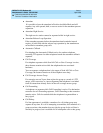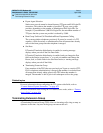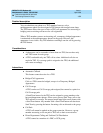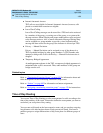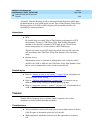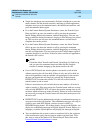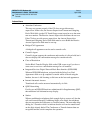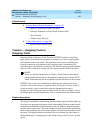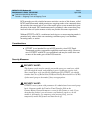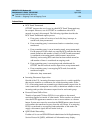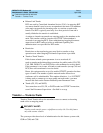
DEFINITY ECS Release 8.2
Administrator’s Guide
555-233-506
Issue 1
April 2000
Features and technical reference
1553Time of Day Routing
20
■ Internal Automatic Answer
TEG calls are not eligible for Internal Automatic Answer; however, calls
placed to an individual extension are eligible.
■ Leave Word Calling
Leave Word Calling messages can be stored for a TEG and can be retrieved
by a member of the group, a covering user of the group, or a system-wide
message retriever. Phone Display and proper authorization can be assigned
to the message retriever. Also, a remote Automatic Message Waiting lamp
can be assigned to a group member to provide a visual indication that a
message has been stored for the group. One indicator is allowed per TEG.
■ Privacy — Manual Exclusion
Privacy — Manual Exclusion can be assigned to any of the phones in a
TEG to prohibit bridging by other group members. A TEG member who
attempts to bridge onto a call with Privacy — Manual Exclusion active is
dropped.
■ Temporary Bridged Appearance
At multiappearance phones in the TEG, a temporary bridged appearance is
maintained after a call is answered. Thus, other members of the group can
bridge onto the call.
Related topics
Refer to ‘‘
Terminating Extension Group’’ on page 959 for information about and
fields descriptions on the Terminating Extension Group screen.
Refer to ‘‘
Station’’ on page 882 for information on button assignments.
Refer to ‘‘
Assigning a terminating extension group’’ on page 170 for instructions.
Time of Day Routing
You can use Time of Day Routing to select route patterns for calls according to the
time of day and day of the week. You need to define the route pattern you want to
use before you set up time of day routing.
You can route calls based on the least expensive route, and you can deny outgoing
long-distance calls after business hours to help prevent toll fraud. You can use
partition groups to assign different time of day route plans for different groups of
users.



